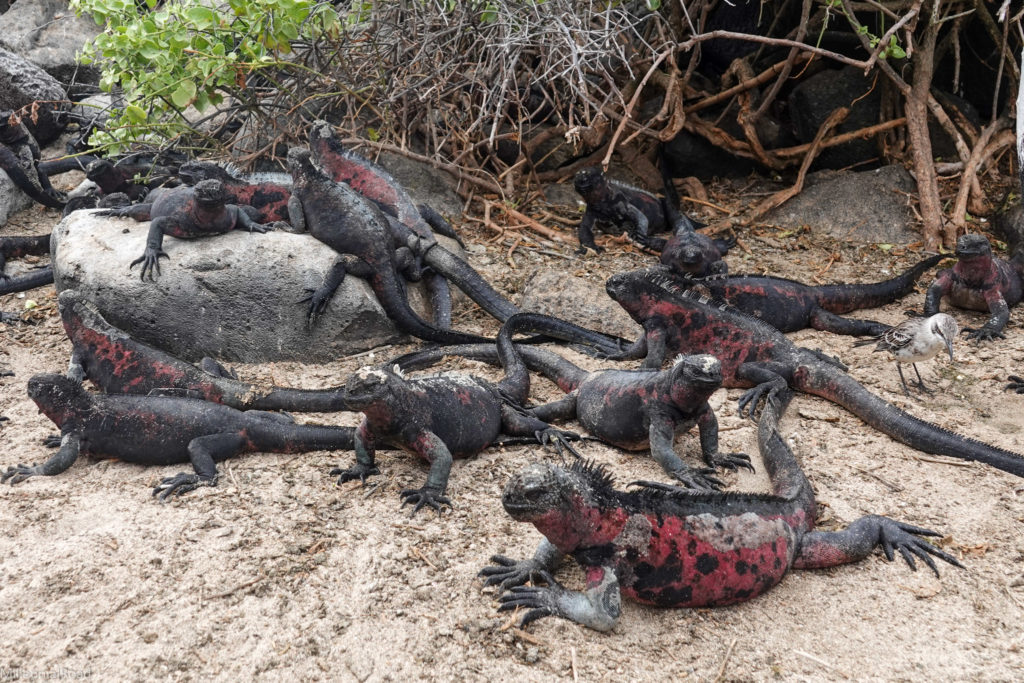
While Española Island may be one of the smaller and older islands in the Galápagos, the diversity of wildlife and landscapes that can be found on this island is nothing short of remarkable.
Diverse landscapes of Española Island
Española Island is in the southeasternmost part of the archipelago and is considered to be one of the oldest of the Galápagos Islands. Sadly, Española Island is a dying island, which has resulted in rugged and desolate terrain, with little or no vegetation in most areas.
The barren, rocky landscape of Española Island is stunning against the backdrop of the crystal blue water, with cliffs lining some edges of the island and white sandy beaches elsewhere.
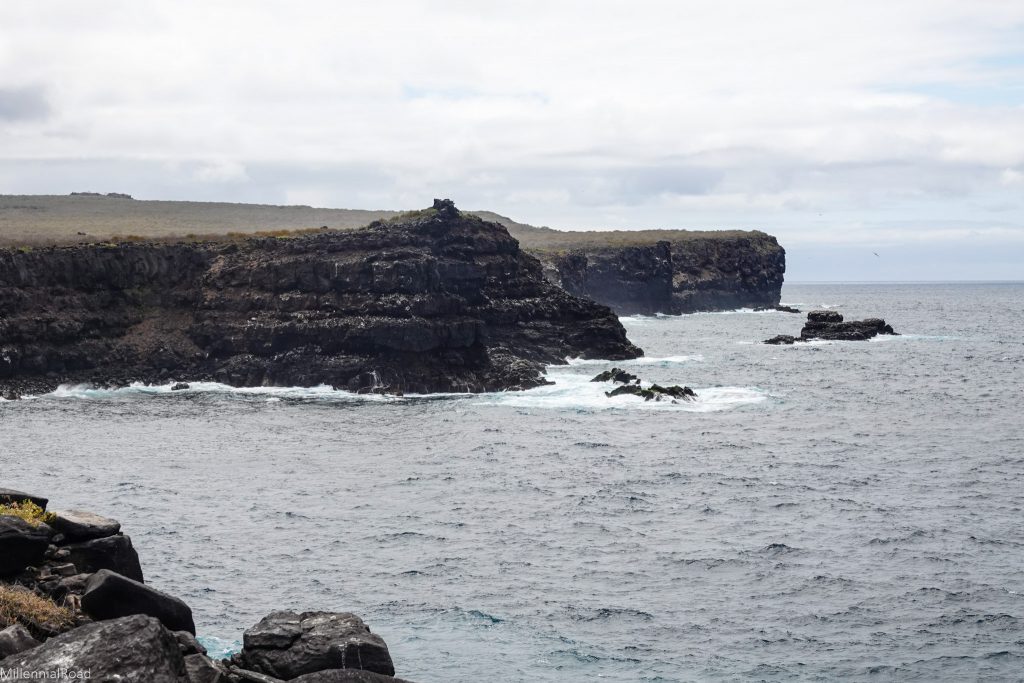
Although dry, the terrain in this area showcased mossy-like grass painted in colorful patterns of red, yellow, and orange.
This rainbow of colors results in the most striking landscape, especially alongside the steep cliff edges overlooking the water.
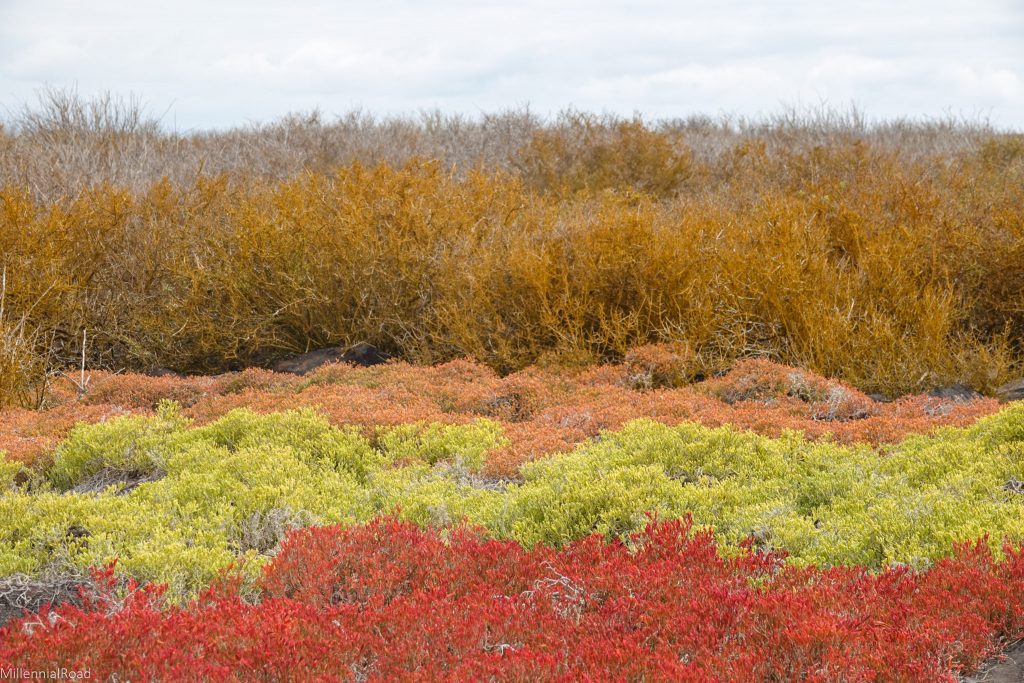
An epic hike at Punta Suárez
We arrived at Española Island on the sixth day of our cruise, beginning the day with a hike at Punta Suárez.
I was almost immediately in heaven as we exited the panga and saw tons of baby sea lions along the water’s edge. Pups were scattered across the shoreline, playing and lounging without fear or worry.
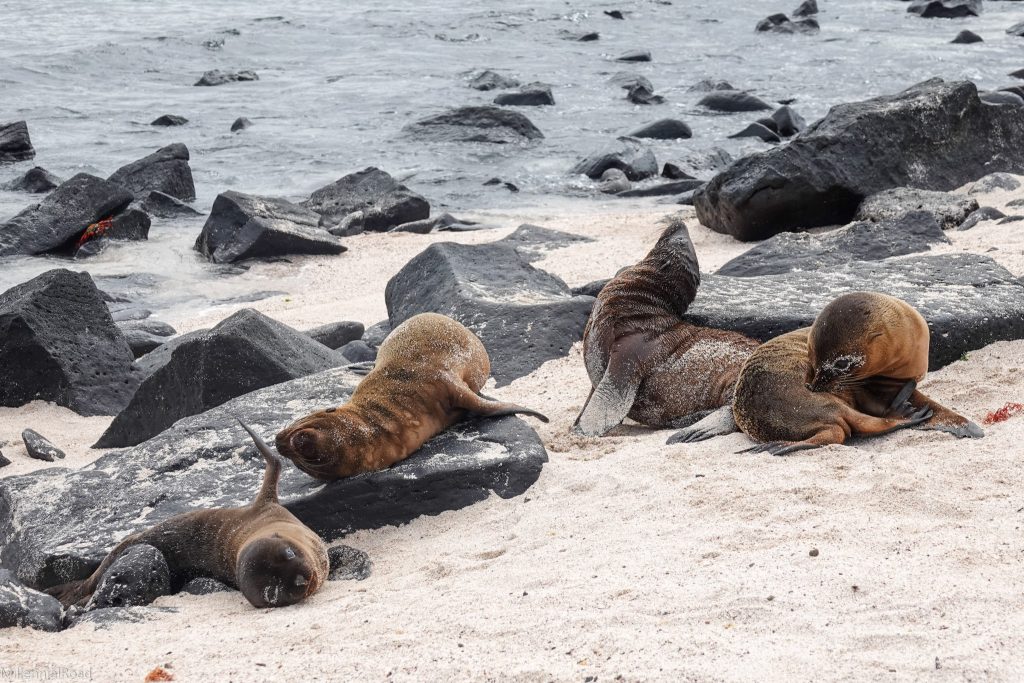
Large numbers of marine iguanas gathered nearby, enjoying the warmth of the sunlight. Each iguana donned a varying pattern of deep red and black, adding to the unique and colorful palette of the island.
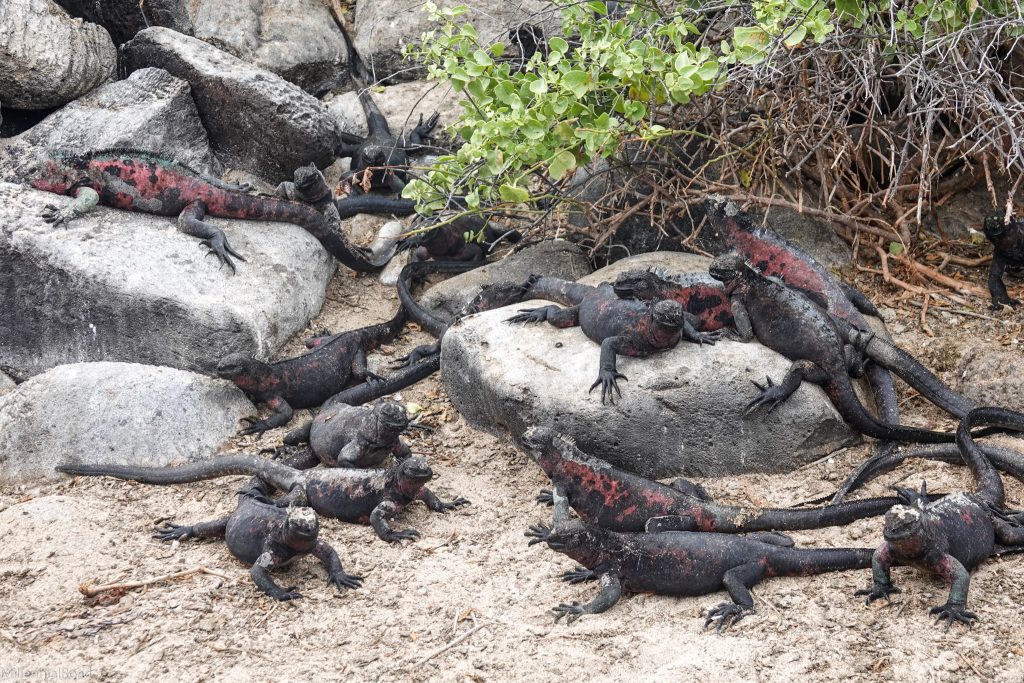
We spent an embarrassing amount of time watching marine iguanas snot out salt water through their nostrils after exiting the water.
Yes, you read me right. Iguanas were shooting snot out of their noses. Over and over again. And it was a surprisingly far distance. Very impressive and gross at the same time!
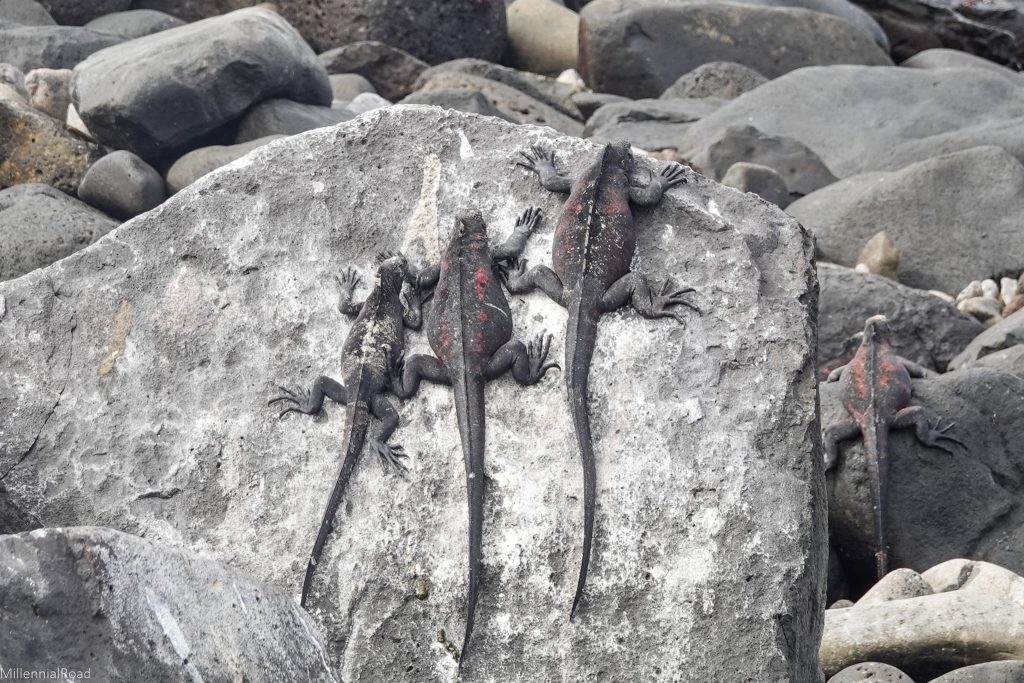
Iguanas weren’t the only reptiles we came across during our hike, passing by several varieties of lava lizards along the way as well.
Further down the trail, we found ourselves face to face with yet another hawk, but this time it was a juvenile hawk. The intricate pattern on the juveniles makes them stunning.
The hawk hopped around on the ground for a while, before making its way to a safe, high spot on a massive boulder along the shoreline.
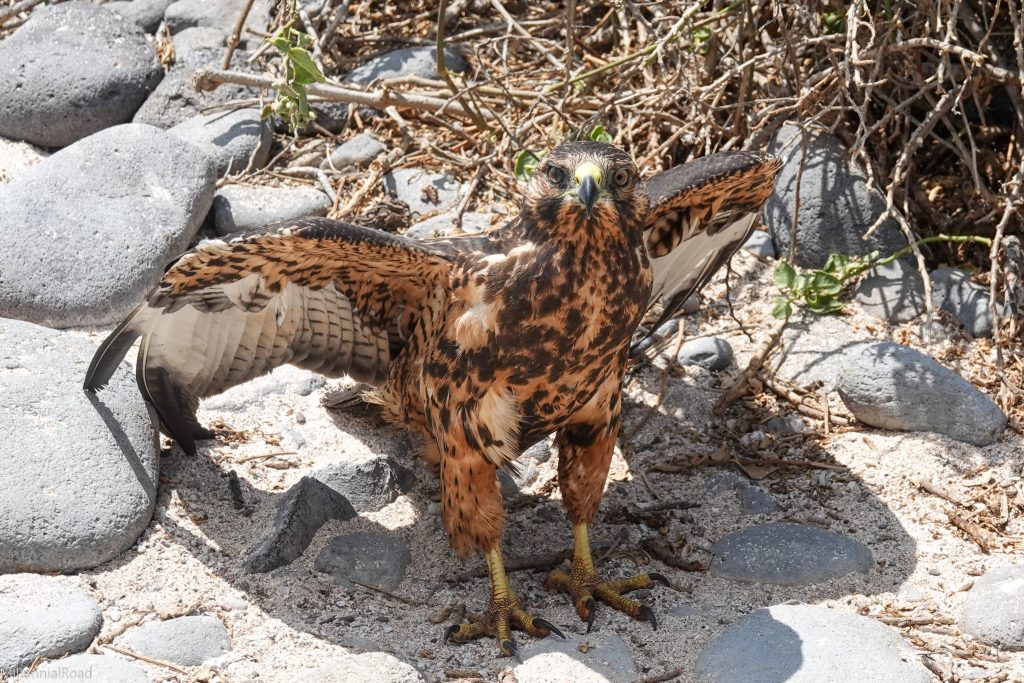
We all watched the hawk in anticipation as we could see it readying itself for flight. Finally, the moment we had been waiting for—the hawk pushed off of the rock and launched into the air.
Spreadings its wings wide, this young juvenile moved effortlessly through the air. Seeing this beautiful, powerful animal take flight and soar away was extraordinary.
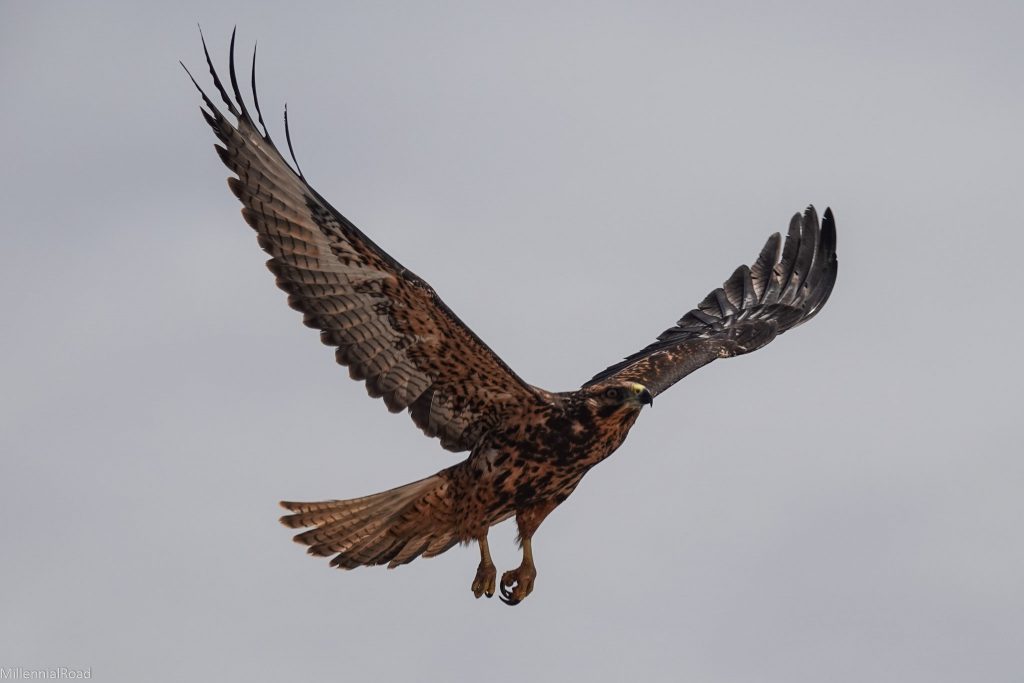
As we hiked deeper into the center of the island, we came across two Waved Albatross adults sitting together. Waved Albatrosses are monogamous and mate for life. Knowing this made observing this loving couple all the sweeter.
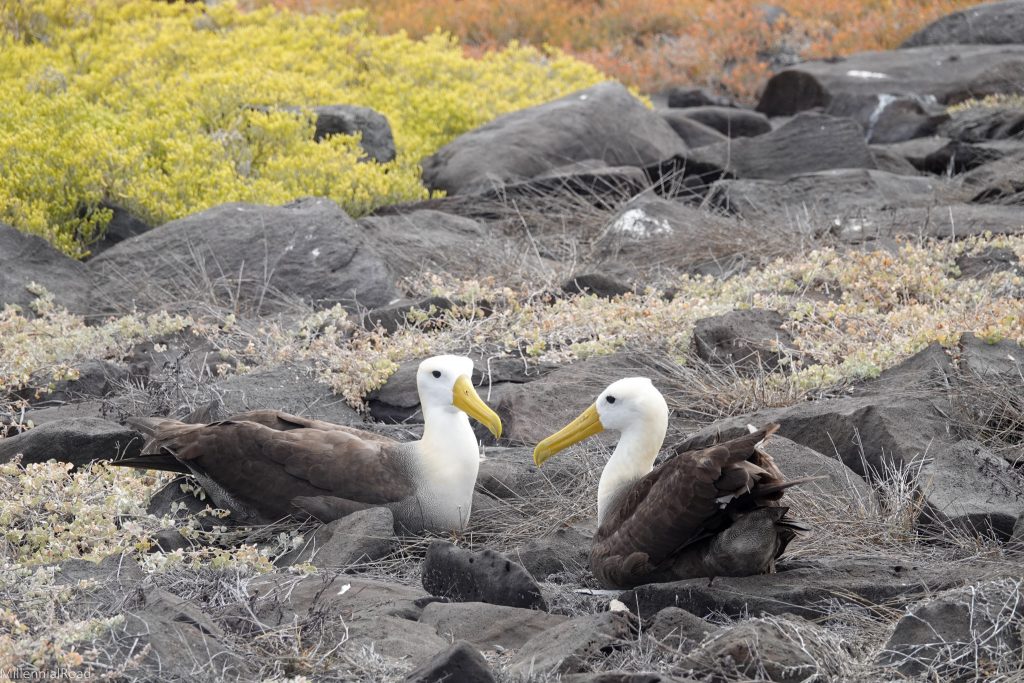
We were lucky enough to spot two juvenile albatrosses during our hike as well. Something about these birds brings a smile to my face just seeing them. They are almost goofy looking, especially the juveniles with their excessive fluffiness.
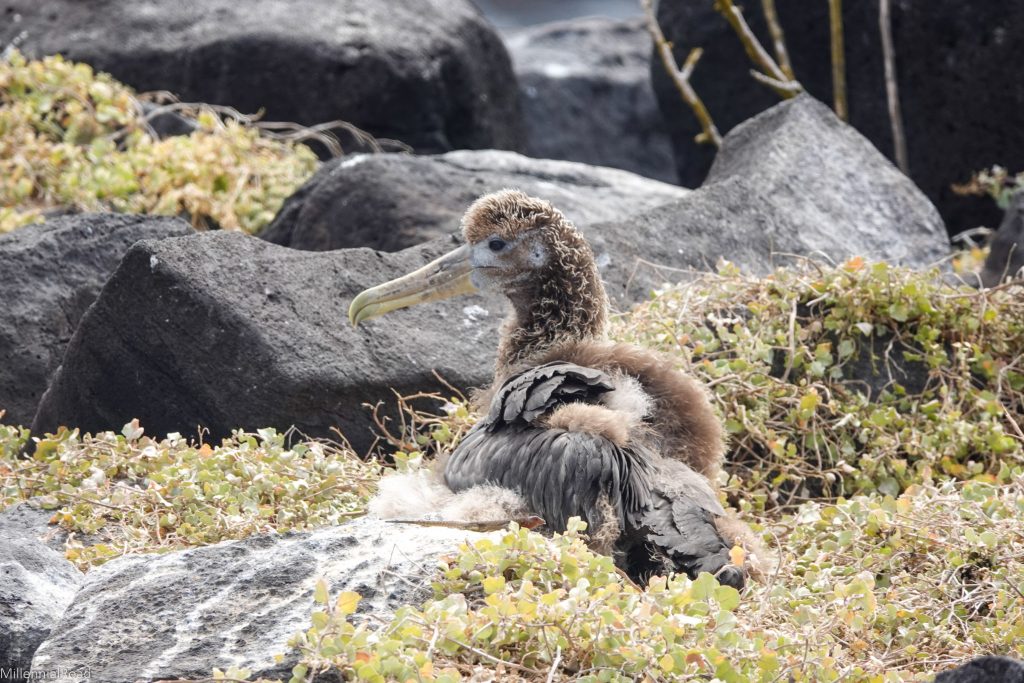
Apparently, this was an astonishingly small number of albatrosses to see in this location during this time of year. We were still excited to see only a few of these incredible creatures, but it makes you wonder whether something is wrong.
As distracting as the albatrosses may have been, we couldn’t possibly miss the blue-footed boobies scattered across the island, drawing attention to themselves, as always, with their bright, blue feet.
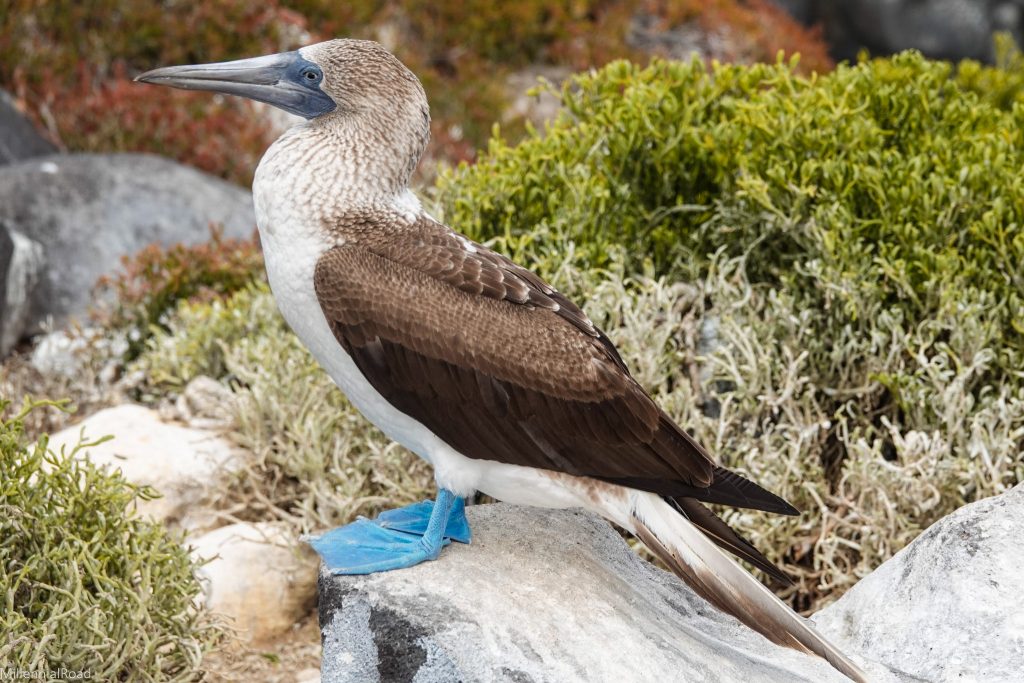
The end of our hike led us to a natural blowhole that repeatedly blasts a stream of water up to 25 meters into the air.

Snorkeling & shocking sights at the beach
Before lunch, we also had the opportunity to enjoy another snorkel. We almost immediately encountered four whitetip reef sharks, which I was becoming surprisingly comfortable swimming with at this point.
Once again, the sharks were nestled together under a rock ledge at the bottom of the ocean. Understanding this pattern was making it much easier to spot these fascinating creatures.
As we continued to swim, we came across tons of stingrays, sea turtles, pufferfish, and so many other beautiful fish that I cannot identify.
These light grey stingrays were nearly half my size and, similar to so much other wildlife in the Galápagos, seemingly unaffected by our presence.
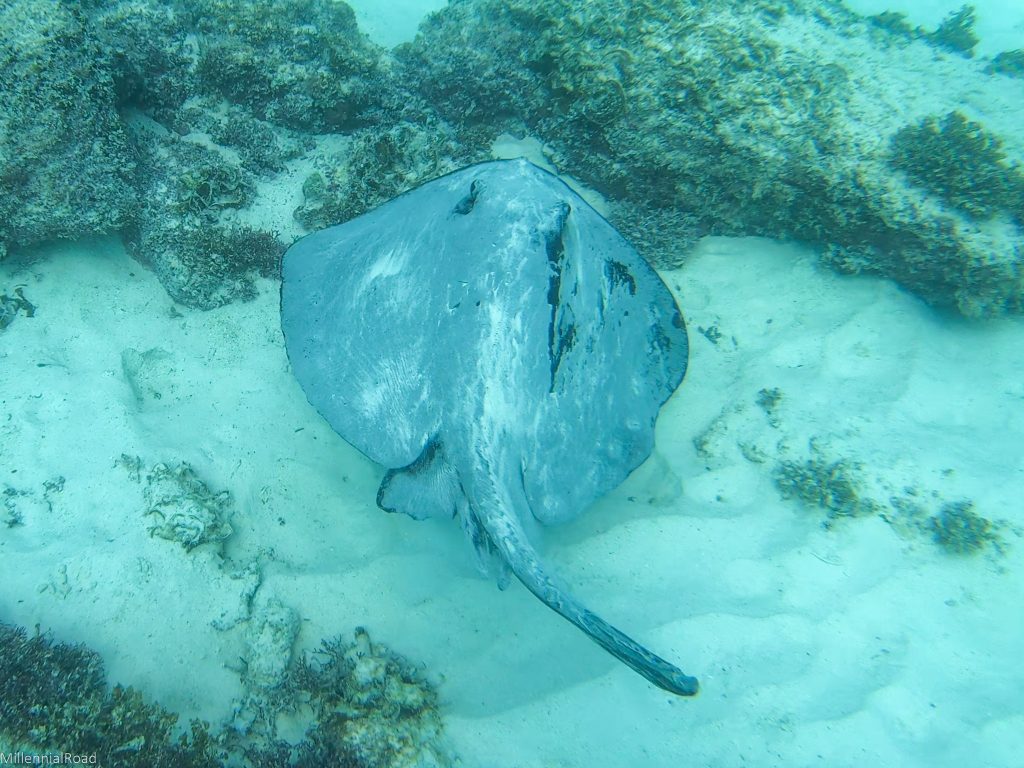
A long, slender fish caught our eye as it swam by, almost glowing beneath the water. This was the first time I had ever seen the bluespotted cornetfish, which interestingly enough belongs to the same family as seahorses.
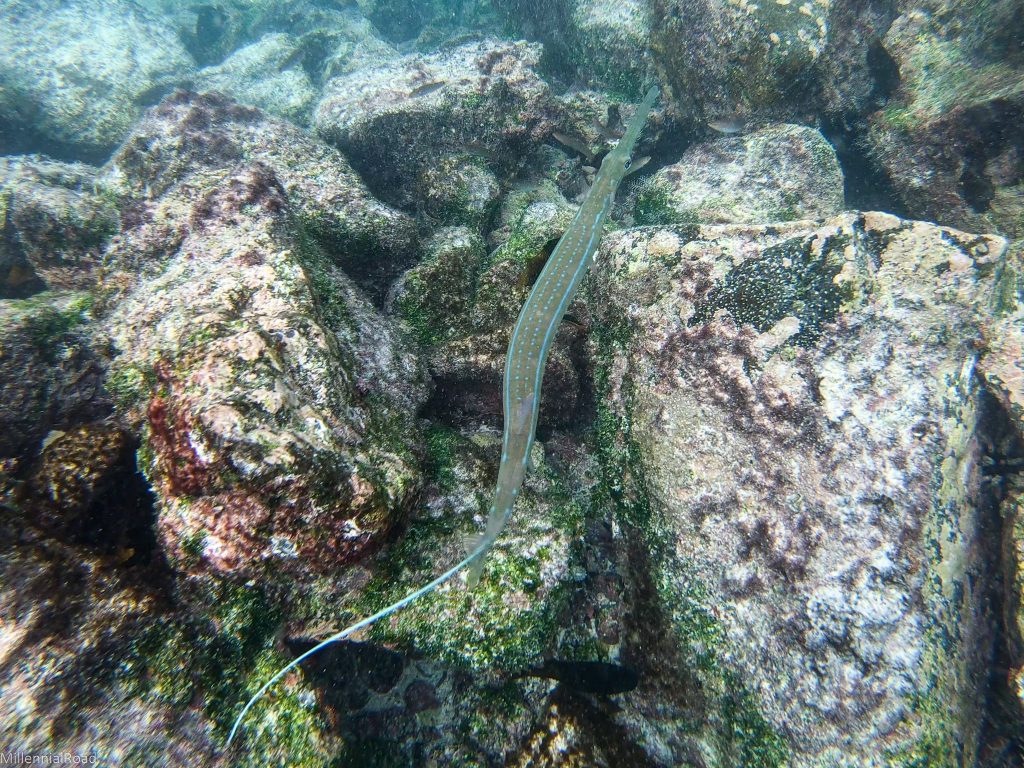
We hiked along a beach on the island after lunch, where we saw more flamingos in a small lagoon. As we strolled along the coastline, several sea turtles and tons of stingrays could be spotted just off the shore.
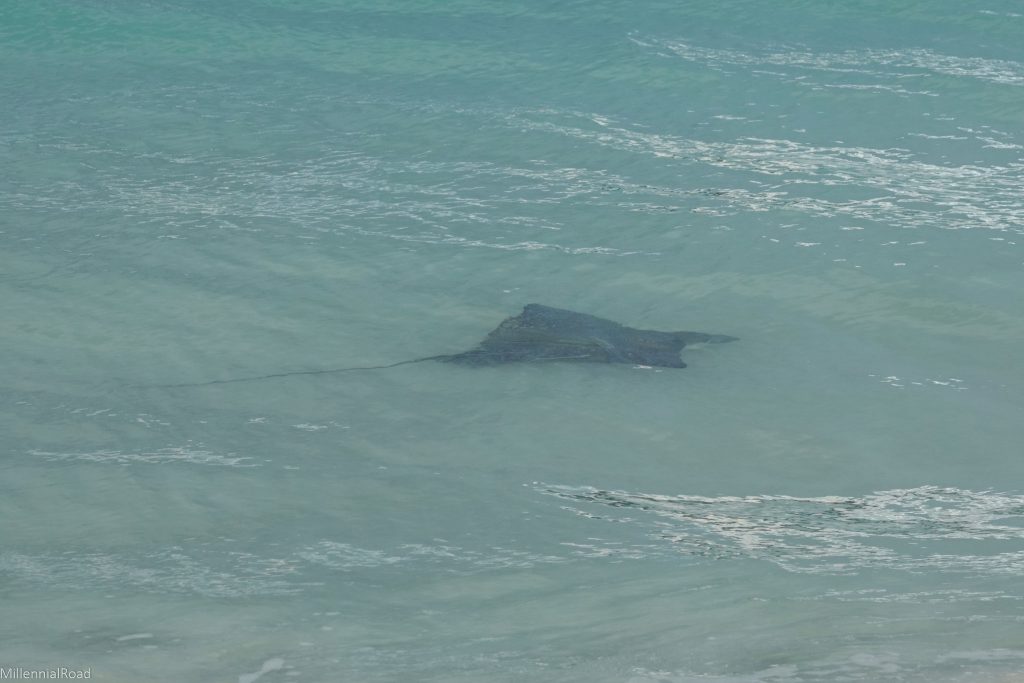
If you’re wondering where to find the most beautiful beach in the Galápagos Islands, then look no further than Gardner Bay (or Bahía Gardner). With a few hours of daylight left for one last adventure, we took a panga ride to Gardner Bay, where we had some free time to walk and swim at this breathtaking beach.
The water was frigid without wetsuits, but that didn’t stop us from taking a dip at this stunning location.

Fair warning—a couple of disturbing sights followed.
First, we walked past a sea lion resting on the beach that had seemingly been attacked. A large chunk of flesh on the sea lion’s head was exposed, leading us to believe something had tried to bite it. What did that sea lion say to death that day? Not today!
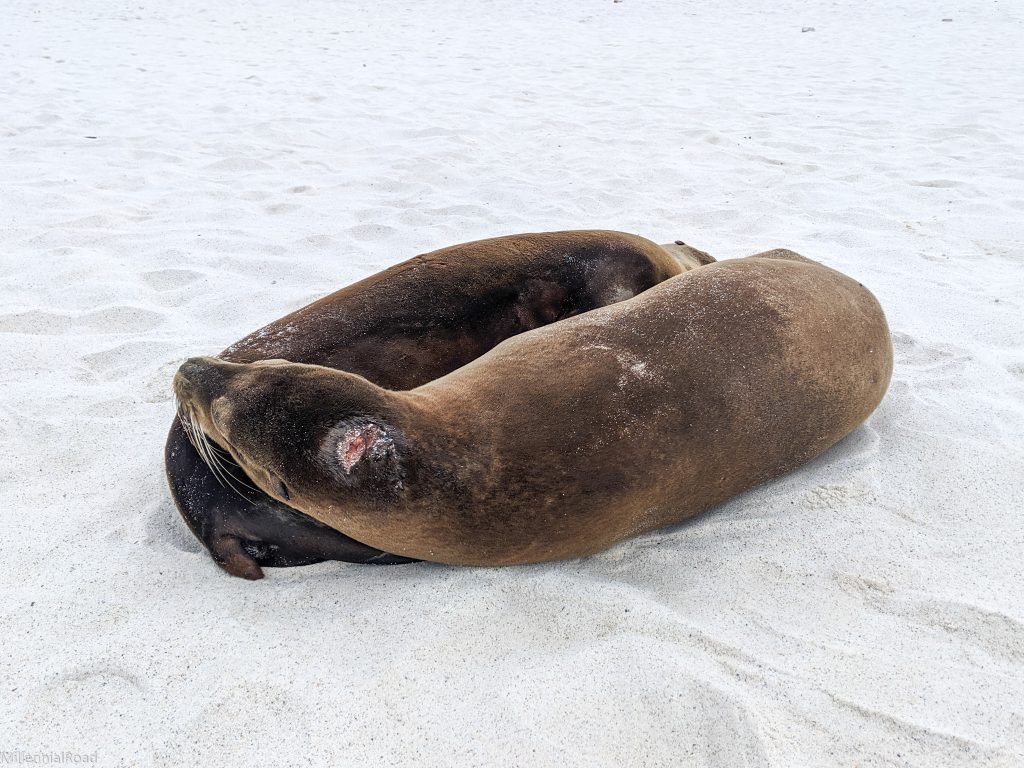
Next, we witnessed sea turtles mating in the water, which was both interesting and disturbing at the same time. The male mounts the female in the water, and she has to hold the male’s weight on top of her while swimming.
Our guide told us that sometimes a much larger male, or even several males, will weigh down a female for so long that she ends up drowning. How terrible is that?
Several other sea turtles were watching them nearby. I would say that was weird, but clearly, they weren’t the only ones watching this spectacle…
To help clear your mind of the strange images I just left there, here’s an adorable picture of a sea lion pup playfully biting another pup.
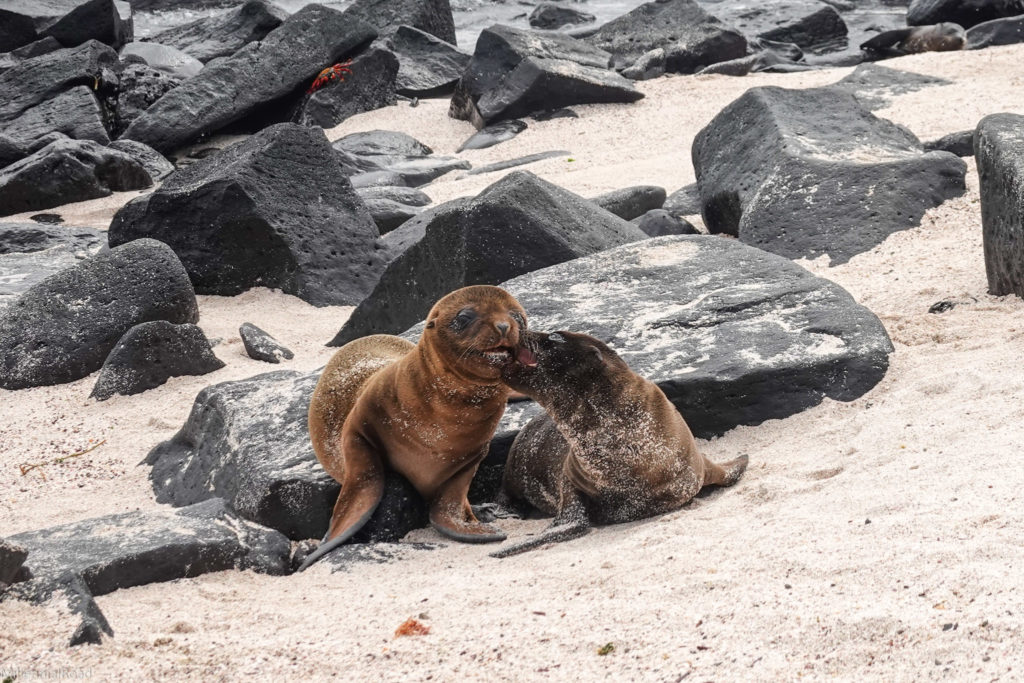
Continue reading about our next adventure snorkeling Devil’s Crown at Floreana Island!
If you missed it, go back and read about our encounters with hammerhead sharks and tortoises at San Cristóbal Island.

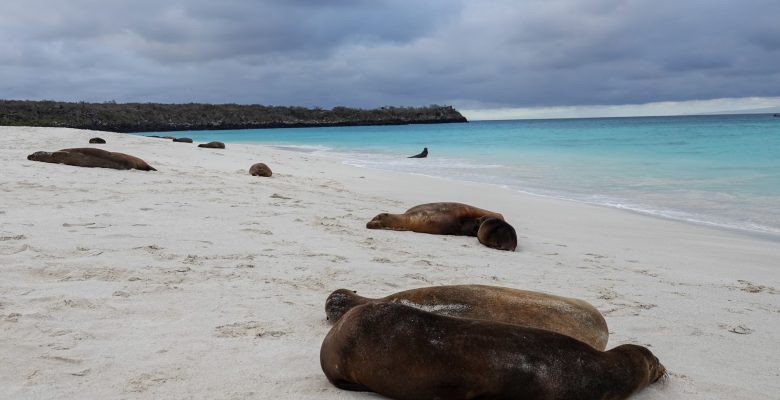
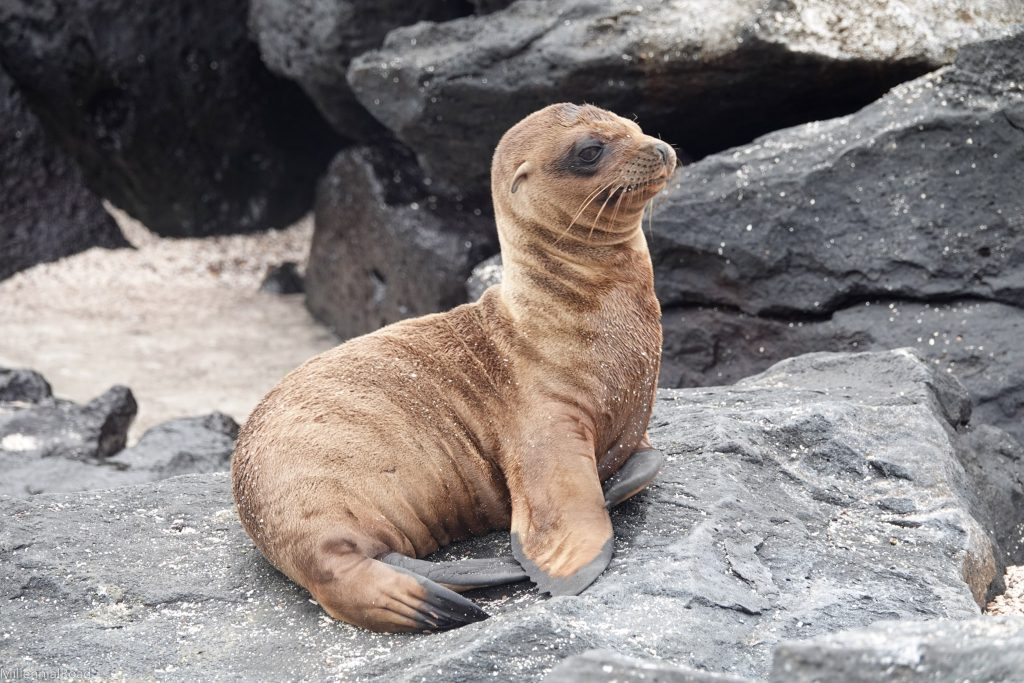
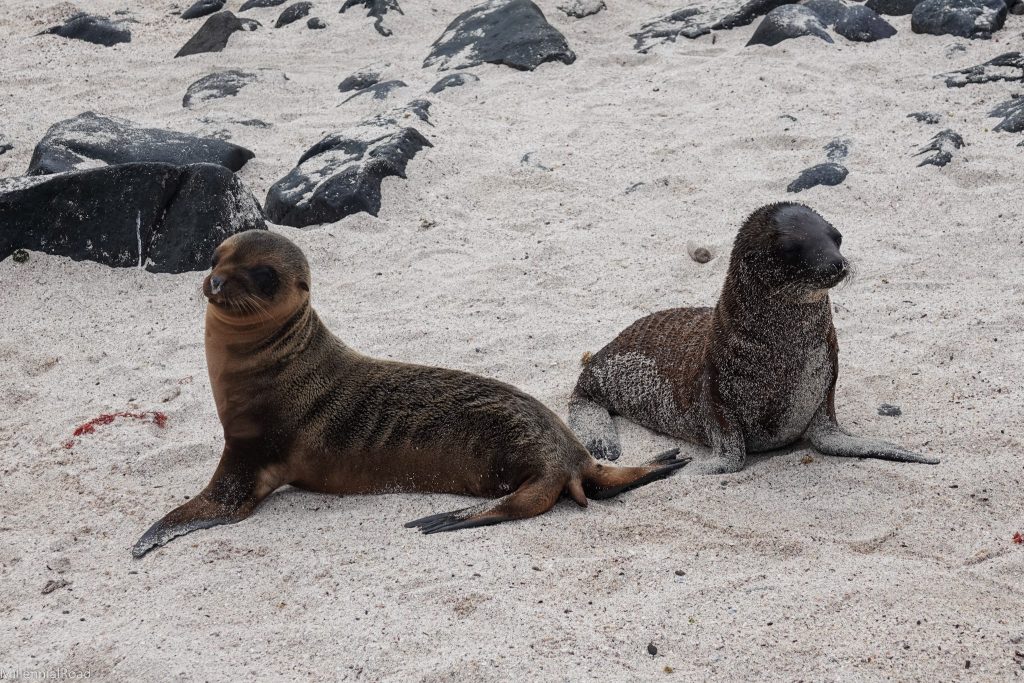
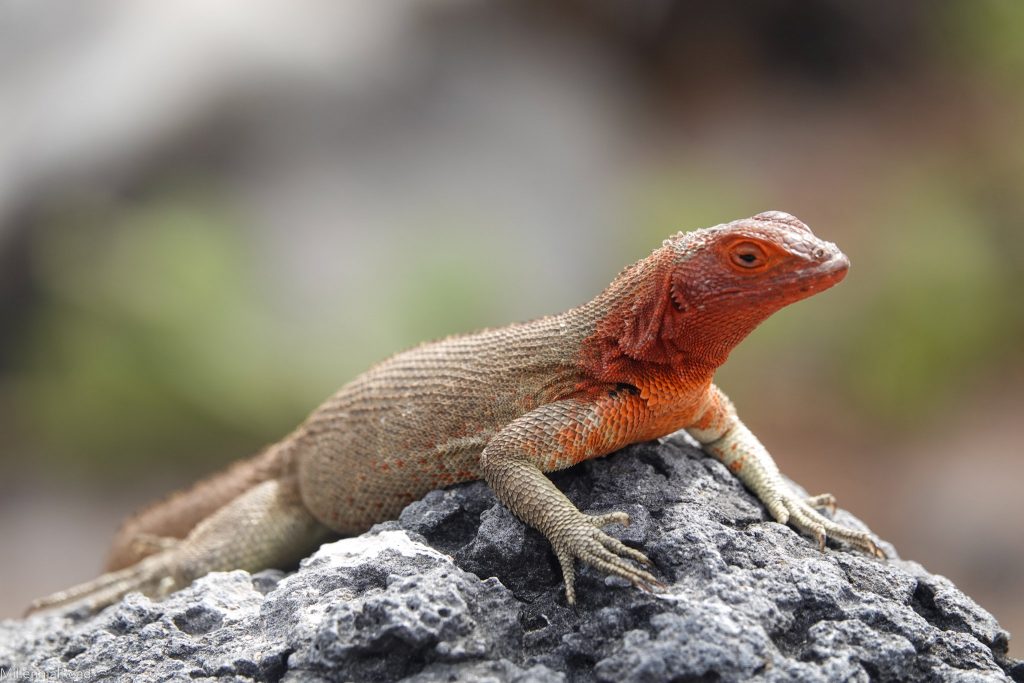
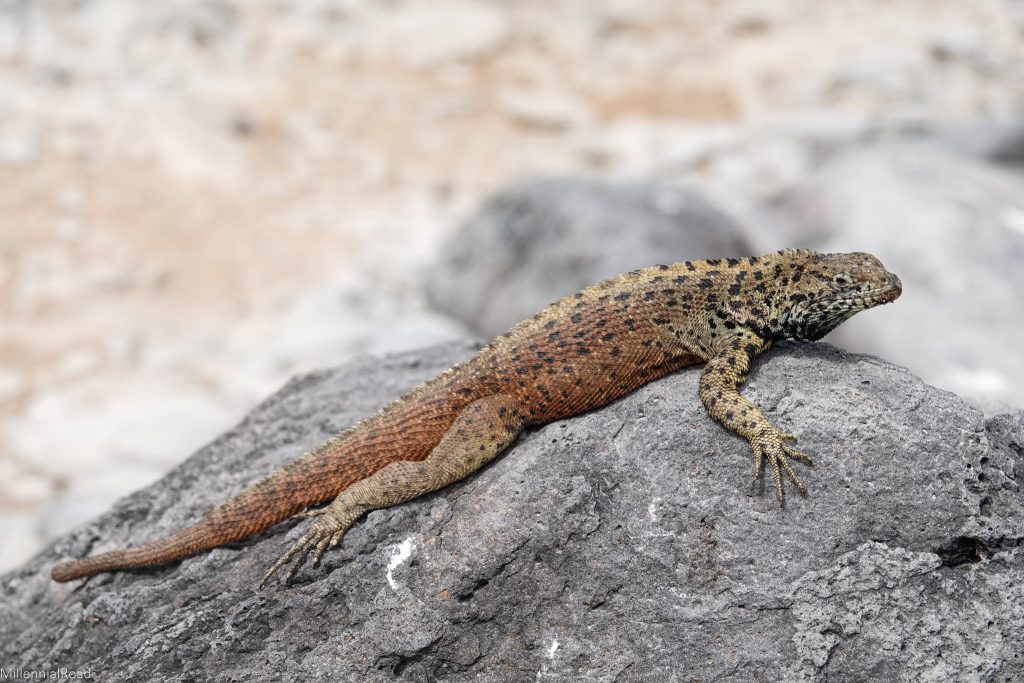
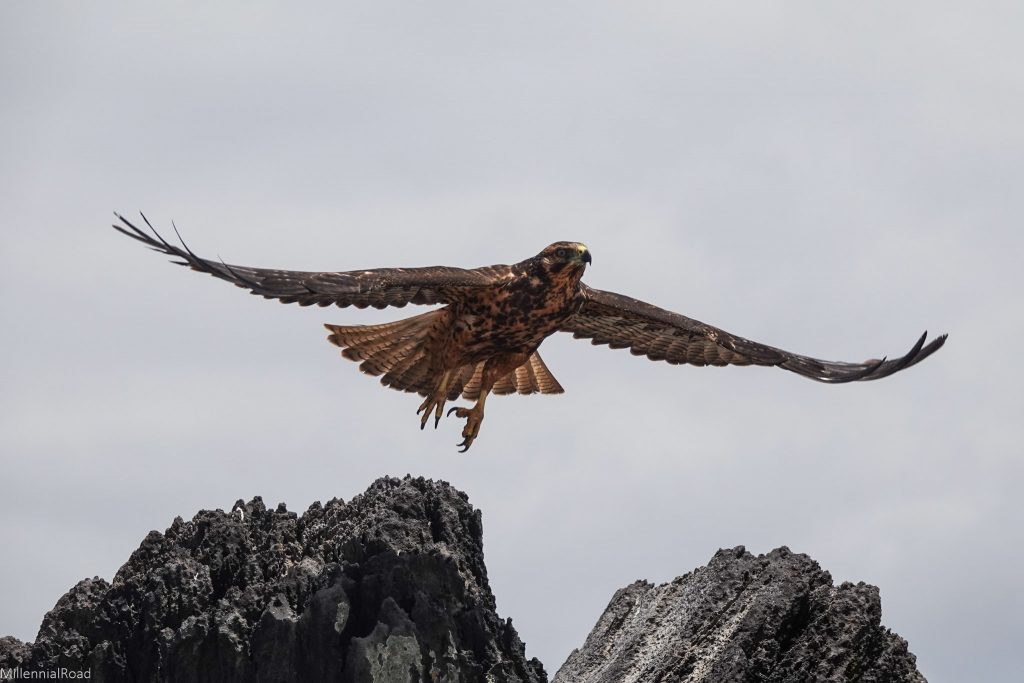
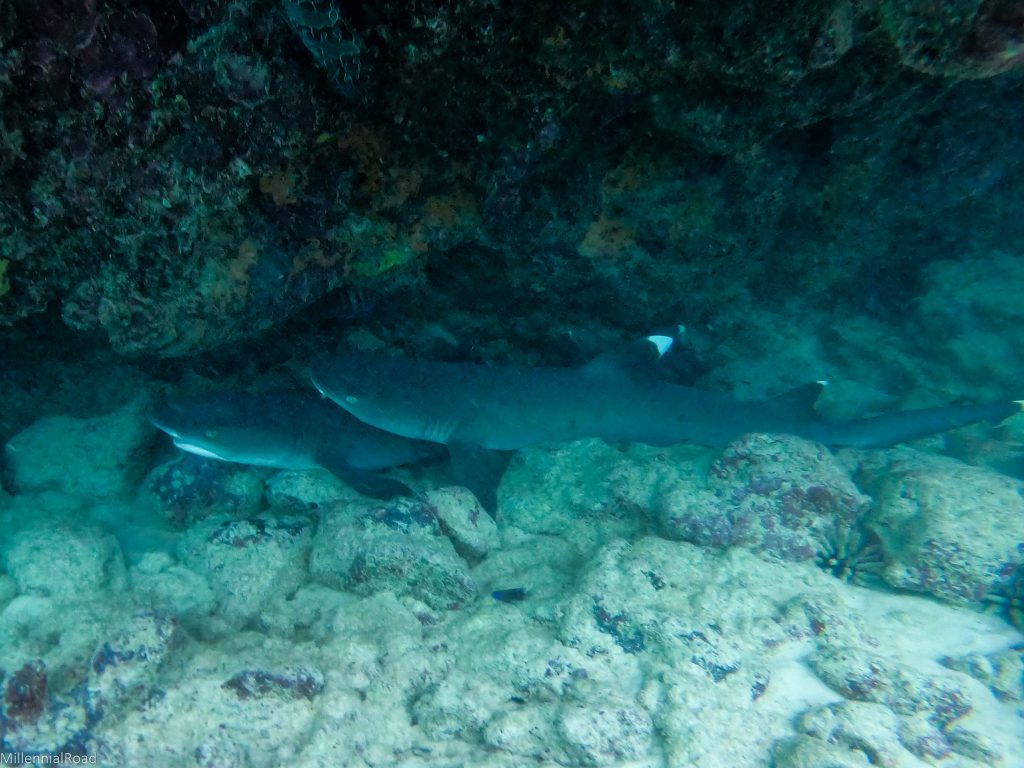
Leave a Reply